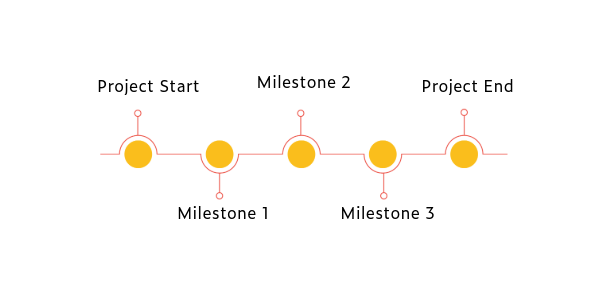The job of SEO professionals typically falls into two categories: handling everyday tasks and working on exciting projects. The everyday tasks, or Business As Usual (BAU), involve routine activities like monitoring, reporting, fixing minor issues, and running A/B tests. These are essential for keeping things running smoothly but can feel repetitive.
On the other hand, SEO projects are where the real excitement lies. They require careful planning, strong stakeholder management, and plenty of soft skills. While they demand more effort, they also deliver much bigger results than day-to-day tasks.
SEO projects are focused, time-bound efforts with clear objectives, designed to bring together different teams and stakeholders to achieve specific goals in search engine optimization.
In this article, we’ll explore how to successfully start an SEO project and avoid common pitfalls that can lead to failure right from the start.
So, How To Successfully Start An SEO Project?

1. Analyze And Prioritize
Starting an SEO project involves first analyzing the current state of the website and identifying what needs to be fixed to improve its Google rankings. Usually, it’s not just one issue, but a list of problems that need attention. However, even if you have multiple teams working on SEO, you can’t fix everything at once. You need to prioritize the most critical tasks to tackle first.
For example, imagine you’re tasked with increasing traffic to the website’s blog. After analyzing the situation, you realize that none of the blog articles are optimized for SEO—they lack keywords, proper headers, meta titles, links, and other important elements. The problem is clear: the content creators aren’t familiar with SEO best practices. The solution? Train the team to start producing SEO-optimized content. This could be done by launching a video course on blog SEO that current and future copywriters can watch.
Now that you’ve identified the problem and a solution, what’s next?
The next step is to assess how important this project is compared to other company priorities. Is it worth focusing on this now? Conduct a cost-benefit analysis to determine its value and compare how much money your project will bring compared to the resources you spend. It is more beneficial than other initiatives on the table?
By the end of this phase, you should create a Project Proposal. This document outlines what you plan to do, why it’s important, the benefits it will bring, and the resources needed to execute it.
2. Define SEO Project Goals
Now it’s time to pinpoint exactly what you want to achieve with your SEO project. Remember, key metrics like visits or clicks, often called “lagging metrics,” take time to show results—usually weeks after the project is up and running. So, it’s important to focus on short-term goals that you can measure more quickly.
You need to clearly define what success looks like for your project. In our example, the main issue is the lack of optimized content on the blog.

In this scenario, your goals might be:
1. Ensure that 100% of content creators complete the SEO course.
2. Ensure that at least 80% of blog posts published after the course have SEO-optimized titles, meta-descriptions, headers, links, and long-tail keywords.
For more on how to set and measure goals, check out my article on OKRs in SEO.
3. Identify Your Stakeholders
Stakeholders are anyone affected by the project, so they need to be involved in setting the goals and expectations. Early in the SEO project, it’s essential to identify who your stakeholders are and align your project’s goals, scope, and details with them.
Stakeholders might include your team members, the CMO and CEO who give you support, and content creators who will take the SEO course once it’s launched.
Once you’ve identified your stakeholders, figure out how involved each one should be. Do they need to attend weekly meetings, or is a monthly email update enough? Find the best way to keep everyone engaged, as these people will be key supporters of your SEO efforts.
After speaking with your stakeholders, revisit your project goals and adjust them if needed. Poor communication is a leading cause of project failure, so make sure you’ve identified all your stakeholders, big and small, and established clear communication channels. Ensure your team also maintains smooth communication with stakeholders to keep everything on track.
4. Define SEO Project Scope
Defining the scope of your SEO project is essential to know what will be included and what won’t. This clarity helps you estimate the resources, costs, and time needed to complete the project.

In our example, if you’re creating an educational SEO course for your company, you need to decide which departments it will target— only content creation, or maybe also marketing and product development?
To define the scope, it’s important to discuss with stakeholders and clarify:
- Main Purpose and Outcome: What’s the project’s goal, and what results are expected?
- Decision Maker: Who will approve the project scope and final results?
- Target Audience: Who is this project intended for?
- Deliverables: What specific materials or outputs are expected?
- Budget and Resources: What funds and resources are available for this project?
- Deadline: When does the project need to be completed?
- Quality Standards: What quality benchmarks must be met?
- Flexibility: How flexible are the budget, schedule, and deliverables? Is speed more important, or is it worth taking extra time to ensure quality?
Once you’ve defined the scope, share it with stakeholders and get their feedback. It’s better to address any changes before the project starts, so you can adjust timelines and resources accordingly.
After the scope is finalized and communicated, it becomes easier to outline which tasks are in scope, which are out of scope, and how to protect the project from scope changes.
For example, if the SEO course is initially scoped as a series of educational videos for content creators to be delivered in 3 months, a later request to include videos for front-end engineers would be out of scope. This change would affect resources and schedule. In this case, you could suggest creating a separate project for the SEO course targeting development teams, with its own budget and timeline. If the change is unavoidable, make sure to adjust the timeline and budget and communicate the updates to stakeholders.
However, remember that changes can happen, and it’s important to prioritize them carefully before deciding whether to approve or reject them.
5. Define SEO Deliverables
SEO deliverables are the specific items or outputs you need to have completed by the end of the project. These could be things like documentation detailing on-page changes, reports, or, in our case, a full set of training materials to educate content creators about SEO.
For example, in our scenario, the deliverables would include:
- 6 videos on SEO on-page optimization
- 6 accompanying texts summarizing the videos
- An SEO checklist
- A test to assess the information learned during the course
These deliverables are what you’ll be working toward throughout the project, ensuring that everything is ready and meets the expected standards by the project’s completion.
6. Define the Timeline
Now it’s time to set the deadlines for your project and determine when each deliverable needs to be completed and presented to stakeholders.
Even if the project is large and complex, it’s a good idea to break it down into smaller tasks that can be finished and reviewed quickly, following Agile methodology. This allows you to get feedback early and often.
For example, if the final deadline for your SEO course is in 3 months, that’s when all deliverables should be ready and shared with stakeholders. However, you can plan to have the first video ready and shared in 2 weeks, the second in 4 weeks, and so on. This approach lets the team start seeing the project’s benefits without waiting for the full 3 months to pass, and inform you if something is not clear and needs to be improved.

7. Define Success Criteria for the SEO Project
Success criteria are based directly on the project goals and are measured after the project is completed. These criteria help you determine whether the project has met its objectives.
When starting the project, the team and stakeholders need to discuss and agree on what success looks like.
For example, if the goal of the project is to deliver an SEO video course that improves the work of content creators, the success criteria might include:
- Delivering an SEO video course with 6 videos, 6 texts, a checklist and test within 3 months.
- Ensuring that 100% of content creators complete the course.
- Achieving 80% SEO optimization for blog articles published after the course (including meta-title, meta-description, H1 tags, keywords, etc.).
These criteria will be used to measure the project’s success. Simply launching the course isn’t enough—you’ll need to check these metrics after the project is completed to ensure it meets its intended goals.
When creating success criteria, make sure they cover the project requirements, deliverables, key performance indicators (KPIs), and other important metrics.
8. Figure Out What Resources You Need And Have
Before launching your SEO project, it’s crucial to assess the resources you’ll need to ensure its success. These resources typically include:
- Budget
- People
- Materials
The key question to ask here is: What resources are necessary to meet the project goals?

Budget
How much money will it take to complete the SEO project? When estimating the budget, consider what SEO tools you’ll need, whether you’ll need to hire outside vendors or freelancers, and any extra fees that might come up.
For example, in our case of creating an SEO course, you might need to budget for:
- Hiring someone to film the course
- Video editing software or hiring an external video editor
- Hiring a copywriter
These costs should be calculated and approved by management before moving forward.
People
To execute the project, you’ll need a team with the right skill set. Think about the roles required, the skills needed for each role, and check the availability of the people you want on your team. Ideally, you’ll get everyone you need on board, but sometimes you might have to work with fewer resources and find creative ways to manage.
It’s also important to motivate your team. Make sure they understand why the project is important, how their work will impact the company’s performance, and how SEO works in general. Without this understanding, they might not fully appreciate the value of their efforts.
Mismanaging resources, such as not having enough time, budget, or other key components, can set the project up for failure. Ensure that team members have enough time to focus on SEO tasks while managing their other responsibilities.
Materials
What physical items do you need for your SEO project? In the case of the SEO video course, you’ll need a camera to film the videos, along with computers for all team members. If you don’t have access to these materials, they can become major blockers.
For instance, if your company already has a camera, make sure it’s available on your filming days. If the company doesn’t have a camera, you’ll need to include its cost in your budget.
Make sure you calculate all the resources you’ll need before the project starts and get approval from leadership. Lacking key resources in the initial phase could lead to project failure later on.
9. Think About How to Track the Project and Documentation

To keep your project on track and provide clear visibility to stakeholders, it’s essential to document the project from the start and keep it updated as the project progresses.
Your project documentation (often called a project charter) could include:
- A brief description of the project
- Project goals
- A list of tasks to be completed
- Definition of done (what needs to be delivered and how you’ll know the project is successful)
- Timeline
- Team members
- Assignment of responsibilities for each task
- Resources required
- Business case
- OKRs (Objectives and Key Results)
- Budget
- Any other relevant details
This documentation will serve as a roadmap for the project, helping you and your team stay aligned and focused. It also allows you to regularly evaluate whether the project’s benefits outweigh its costs, ensuring that the value it brings is greater than the money and resources you invest in it.
Consider creating a template for this documentation, making it easier to replicate and update for future projects.
Why It Matters
By dedicating time and resources to a well-planned SEO project, you can address underlying issues, capitalize on new opportunities, and ultimately drive more value for your business. It’s an essential step in staying competitive and ensuring your website’s success in the ever-changing digital landscape.

